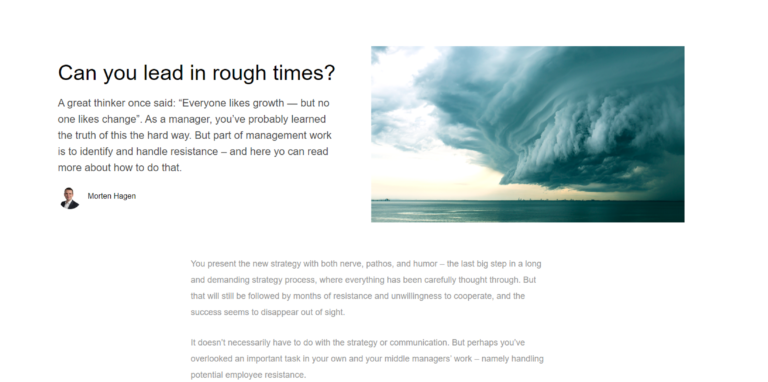3 steps to turn your goals into results ...
You probably set goals for yourself that are to boost your revenue, your sales or your fitness. But do you achieve these goals? Here you’ll get a concrete tool that helps you turn your goals into results!
Rasmus Åradsson

“Results don’t tell you where you’re going – only where you’ve been! They’re in the past.”
This quote is from one of our colleagues, and although it may sound provocative, you’ll soon know exactly what he means.
Very few of us use our energy the right way when we set goals. However, it’s not that hard to change, and you can still adjust the course before organizing your fall activities.
But before we go into the ‘how’, think about the goals you really want to meet.
What achievements could help you increase sales, growth, happiness, and growth – in your organization? In your department? In your team? And for you?
Then ask yourself what goals you tend to be successful with. But also which goals you tend to have a little more trouble reaching. This will help you identify the key steps for success.
Pave the way for success.
Activities
The actions and efforts that lead to results.
Willpower
Foundation
The skills, attitudes, and abilities needed to succeed

This means that it makes no sense to set goals if you don’t pave the way for them to be realized. But let’s be honest:
Have you ever set a goal without worrying about identifying the activities, willpower, and skills that would enable you and your employees to reach it?
Now is the time to change that.
So how do you set goals?
When you don’t get the expected result, it’s almost always due to the fact that the activities, willpower, or foundation wasn’t in place. Therefore, you should make a habit of also setting goals for these factors.
You can do this by asking yourself:
- Which and how many activities will it take?
- How much willpower will it take?
- Do we/I have the necessary attitudes and competencies to do this?
Most of us are very good at setting quantitative goals for, e.g., increased revenue, a better bottom line, more customer meetings, more efficient processes, better cooperation, improved communication, greater efficiency, etc.
But a really strong goal also needs to clearly answer the question of ‘why’.
In our world, the ‘why’ is a precise description of what you and your organization will gain from achieving your goal. Because we only enjoy achieving the goals when we have a strong reason for why we do it.
But let’s pull up an example that shows what we mean:
I’m a runner and have built a foundation that improves my abilities by training with other runners and asking them for advice. I’ve also started using a smartwatch so I can track my performance. The goal of my foundation is to gain a greater knowledge of running, recovery, and diet.
I use different strategies to adjust my willpower. For example, I set milestones and compete against others. I’m conscious of my goal of getting better, as this puts me in a positive mental state. I always think about how my body will be stronger for every run. Even on the runs where I’m not as fast as I’d like to be.
All runs make me stronger, and it doesn’t stop there: When I maintain a high levelof activity, my willpower and motivation increases too.
One important point is that the results I create today are a product of my activities, willpower, and foundation from the past. My current time on a 5-kilometer is the result of my previous training.
In companies and organizations, we spend a lot of energy looking at our results. They are very important, but they belong to the past – so we can’t necessarily use them when it comes to the results we want to create in the future.
Instead, we should devote more time to setting goals for activities, willpower, and foundations. This is where the real potential is!

If you’re a manager and you do this, you’ll always be one step ahead. And then we’re back to the quote from our colleague. Results are in the past.
The best managers ensure results by identifying the three factors that pave the way to them. In other words, they’re proactive rather than reactive. And you can be, too.
So enjoy setting – and reaching – the right goals!



